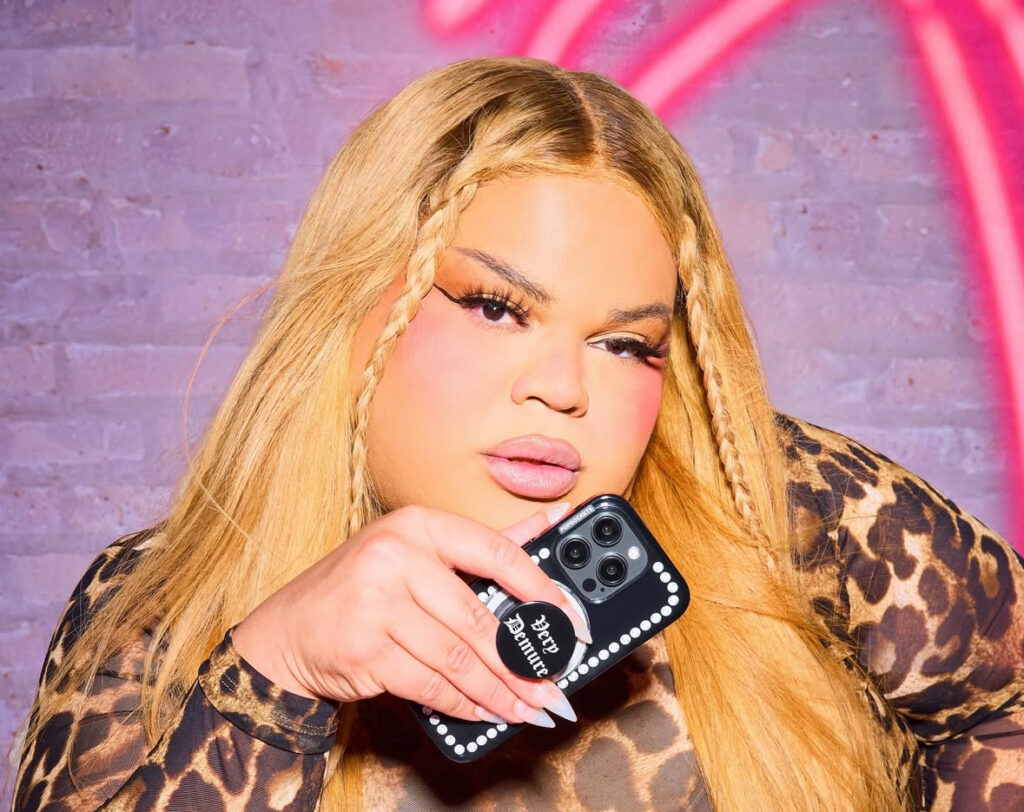If Vintage shopping were the Super Bowl, Japan’s secondhand and consignment scene would be the Kansas City Chiefs. If, despite the Taylor Swift of it all, you’re not familiar with the Chief’s victory lore, this means the secondhand market in Japan is very good. Globally, secondhand shopping has become a favored method of showcasing individuality and copping unique luxury pieces, often at personally advantageous prices.
In Japan, this method of shopping is believed to have really begun to boom in the 60s and 70s as Ivy League style – blazers, slacks, button-downs – and more uniform apparel reached its peak. Soon after, more expressive methods of dressing began to enter their vestiary zeitgeist. This can be seen through the rise of various Japanese fashion subcultures, such as the popularity of oversized socks and schoolgirl outfits beginning in the 80s and the gyaru, or “gals” trend, during the Showa era in the 90s.
Suffice it to say that Japan’s status as a fashion capital has been established for years. If this wasn’t enough, Japan is also the birthplace of some of the most forward-thinking and perspective-shifting designers to occupy the fashion space. From Issey Miyake’s era-defining pleats to the domineering street style presence established by Bathing Ape founder Nigö, and of course, Chitose Abe, the founder of elevated contemporary sportswear brand Sacai, every end of the style spectrum has not only been impacted but elevated by Japanese creators.
Beyond being responsible for some of the most recognizable fashion subsets, Japan – specifically the neighborhoods of Tokyo – also has a comparably massive amount of thrift and secondhand stores, quickly becoming one of the highest-rated destinations for vintage shopping.
From highly touted chain stores, including Bookoff, 2nd Street, and Ragtag, to beloved haunts of locals and tourists like Amore Vintage and Casanova Vintage, Japan’s second-hand scene is far from scarce.
With this and the breadth of Tokyo’s shopping scene in mind, here is a rundown of some of the must-hit spots for your next trip to Japan and an explanation of what makes the shopping scene in Tokyo so lucrative.

Where To Shop
During our six-day stay in the Setagaya neighborhood of Japan, we spent four of them scouring these shops for the best deals and vintage designer items. We took a relatively laissez-faire approach to our shopping, but there were a few wishlist items we were on the hunt for.
- A Goyard tote
- A Dior saddle bag
- Louis Vuitton x Stephen Sprouse Monogram Graffiti Speedy
When shopping in Japan, the first thing to note is the American dollar is the rough equivalent of 150 Japanese Yen. This means in many instances, your dollar can go further. Additionally, many shops offer tax-free shopping for foreign visitors, as long as you bring your passport. In essence, the vintage scene here lets you get a lot more fashion bang for your buck.
Bookoff
Bookoff is one of the most common search results for vintage stores in Japan. One thing to note is that while there are multiple locations, they all vary in size and, as a result, selection. The location we went to during our first day of shopping was the Shibuya Kamiyamacho Store, located in Shibuya City. This location was quite small and only had a few cabinets’ worth of purses, a singular rack of clothing, and a couple of casings for smaller items like wallets.
In terms of pricing, these bags came in slightly below United States retail.
This Gucci Nailhead Pochette bag was on sale for 55,000 JPY, which would be 366.72 USD. Comparatively, a similar bag was listed at $595 on TheRealReal.
Bookoff is famous for a reason, but one of the most important things to keep in mind is that some locations are, as the name suggests, solely bookstores, and others are quite small, which limits inventory. If you want to maximize your chances of cashing in on their coveted bag scene, Bookoff Bazaar or Bookoff Super Bazaar may be your best bet.

Bingo Used Clothing
Bingo Used Clothing has a much more extensive apparel selection that was labeled and organized by brand, a massive plus for those who go in knowing exactly what they want.
The pricing here was also quite decent. This Chloé leather Drew Turlock wallet was on sale for 9,000 JPY, the equivalent of 60 USD.
Bingo’s bag selection wasn’t huge, but if you are looking to get more high-label places in your rotation, this is a great place to visit.
Casanova Vintage

Of all the places we visited, this is definitely where things began to pick up for us. First of all, this store has two locations on the same street. The first location we visited required us to take our shoes off and provided us with slippers to wear in the store, and we love to see it. There was a Chrome Hearts couch and Supreme gaming console that made us feel like we were at an All-Star Weekend after-party, not a secondhand store. Their selection of items, though, was anything but a game.

Louis Vuitton x Stephen Sprouse Monogram Graffiti Speedy 30 is a staple on streetwear Pinterest and was on sale for 242,000 JPY or 1,613 USD. Less than a block away at their second location, they had a few traditional speedy bags that were all priced at around 143,000 JPY or 953.17 USD.

Even though we did not score at this store, it was the most successful trip for the group. They had a vast selection to choose from including one-of-a kind pieces and cult faves like the Louis Vuitton Speedy 30 or the Dior Saddle Bag.
Compared to any of the other stores we visited, Casanova Vintage had the broadest selection. The Bookoff location we visited was restricted by its size, but there inventory was nothing to scoff at. Out of all of the stores though, Bingo Used Clothing had the most to offer in terms of actual clothing options.
So, to recap, the most important things to note when visiting Japan for its vintage shopping scene are understanding location, building familiarity with the tax refund system and to make sure you have enough space to bring back your loot.
Location, location location
Tokyo is the largest city in the world, so if shopping is a high priority for your trip, you should plan your stay around the places you want to visit most.
Ask about the tax-free prices
Some stores have it listed automatically, and others require you to log it in at the airport or another location. Each shop is different, so make sure to check beforehand.
Bring Extra Luggage
If you plan on blowing a bag, make sure to bring an extra suitcase. This allows you to have extra room for your new bag babies without running the risk of having them smushed as you take them back to their new home.






